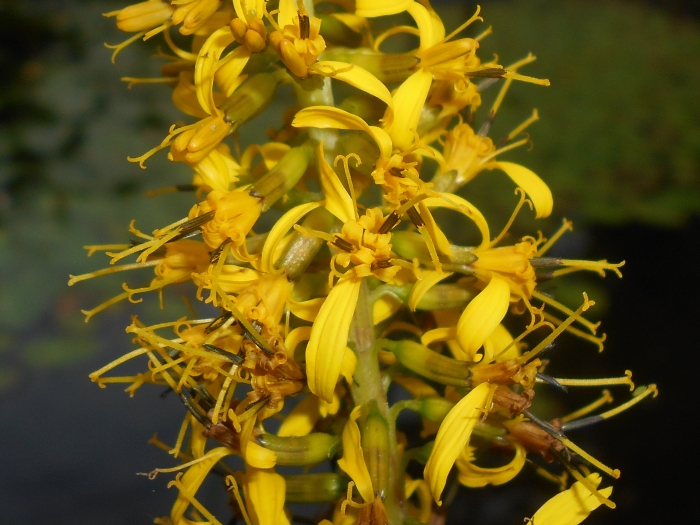Narrow Spiked Ligularia
(Ligularia stenocephala)
Narrow Spiked Ligularia (Ligularia stenocephala)
/
/

Salicyna
CC BY-SA 4.0
Image By:
Salicyna
Recorded By:
Copyright:
CC BY-SA 4.0
Copyright Notice:
Photo by: Salicyna | License Type: CC BY-SA 4.0 | License URL: https://creativecommons.org/licenses/by-sa/4.0 | Uploader: Salicyna | Publisher: Wikimedia Commons | Title: Ligularia_stenocephala_2017-06-25_3195b.jpg | Notes: {{Information |Description ={{en|1=Location taken: Fairchild Tropical Botanic Garden, Miami, FL USA. Names: Rhapis excelsa (Thunb.) Henry, Bamboo Palm, Broad-Leaved Slender Lady Palm, Chinese Windmolenpalm, Fern Rhapis, Fern Rhapis (As Rhapis... |




























Estimated Native Range
Summary
Ligularia stenocephala, commonly known as Narrow Spiked Ligularia or Leopard Plant, is a deciduous perennial herb native to moist meadows and stream banks in East Asia, particularly in China, Taiwan, Korea, and Japan. It typically grows to a height of 5-6 feet (1.5-1.8 meters) and a spread of about 4 feet (1.2 meters). The plant features large, heart-shaped leaves with serrated edges and tall spikes of bright yellow, daisy-like flowers that bloom in late summer to early fall, which are quite showy and attract pollinators.
Narrow Spiked Ligularia is valued for its bold foliage and striking flowers, which make it a focal point in shade gardens, woodland plantings, and along water features. It thrives in cool, moist conditions, mimicking its native habitat. It is often used as a specimen plant or in mass plantings for dramatic effect. This Ligularia requires consistently moist soil and should not be allowed to dry out. It prefers rich, humusy soil with good drainage and can tolerate full shade to part shade. While generally low-maintenance, it can be susceptible to slug and snail damage. Additionally, it may wilt in too much sun or during hot weather, so afternoon shade is beneficial.CC BY-SA 4.0
Narrow Spiked Ligularia is valued for its bold foliage and striking flowers, which make it a focal point in shade gardens, woodland plantings, and along water features. It thrives in cool, moist conditions, mimicking its native habitat. It is often used as a specimen plant or in mass plantings for dramatic effect. This Ligularia requires consistently moist soil and should not be allowed to dry out. It prefers rich, humusy soil with good drainage and can tolerate full shade to part shade. While generally low-maintenance, it can be susceptible to slug and snail damage. Additionally, it may wilt in too much sun or during hot weather, so afternoon shade is beneficial.CC BY-SA 4.0
Plant Description
- Plant Type: Herb
- Height: 5-6 feet
- Width: 3-4 feet
- Growth Rate: Moderate
- Flower Color: Yellow
- Flowering Season: Spring
- Leaf Retention: Deciduous
Growth Requirements
- Sun: Full Shade, Part Shade
- Water: High
- Drainage: Medium
Common Uses
Bee Garden, Bird Garden, Border Plant, Deer Resistant, Hummingbird Garden, Showy Flowers
Natural Habitat
native to moist meadows and stream banks in East Asia, particularly in China, Taiwan, Korea, and Japan
Other Names
Common Names: Golden Ray, Mörk Gullstav, 곤달비, 戟葉橐吾
Scientific Names: , Ligularia stenocephala, Parasenecio subglaber, Cacalia subglabra, Ligularia stenocephala f. quinquebracteata, Senecio stenocephalus, Ligularia taiheizanensis, Ligularia oligantha, Ligularia sibirica var. oligantha, Ligularia sibirica var. stenocephala
GBIF Accepted Name: Ligularia stenocephala (Maxim.) Matsum. & Koidz.